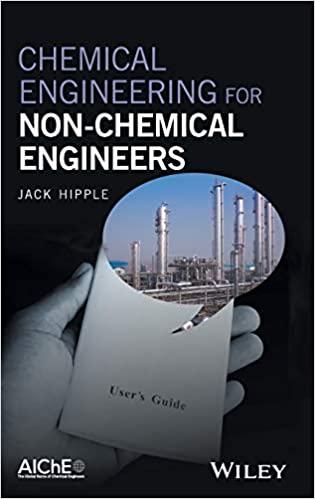Answered step by step
Verified Expert Solution
Question
1 Approved Answer
Q 2 . For the remaining questions, we will assume that a heat pump will be installed to provide 6 0 % of the heat
Q For the remaining questions, we will assume that a heat pump will be installed to provide of the heat
required to heat the pool water, the reminder being provided by the solar heat exchanger. For the purposes of
the analysis below, ignore heat losses to the surroundings and do not use the COP above as that was just an
initial estimate. We will calculate the actual COP below. The operating conditions for the heat pump are:
Operates on a vapourcompression cycle with refrigerant Ra
The outlet of the compressor is at MPa and
The outlet of the condenser is a saturated liquid at
The inlet to the evaporator is at
The outlet to the evaporator is at kPa and
The ambient temperature is and the pool water temperature is to be maintained at
Module : Tutorial
a Draw the cycle numbering each stream. Start with the outlet of the evaporator as stream and number
sequentially around the cycle. Show the direction of flows and energy transfers into and out of the
system. Indicate where heat is transferred tofrom the pool water and ambient air.
Using stream numbering as per part a determine:
b the flowrate of water that is recirculated through the heating system solar knowing that the
water temperature increases by Assume that water has a constant heat capacity of
c the work required to pump the water through the heater system from the pool and back again if the
pressure drop for the water through the heating system in kPa.
d the flowrate of refrigerant required. Q For the heat pump in Qusing the same stream numbering determine:
a the compressor work.
b the flowrate of air required for the evaporator if air can only be cooled by Remember to draw your system and state your assumptions where applicable. Start with equations from the
equation and data booklet. Simplify based upon assumptions.
Q A proposed Olympic size swimming pool is heated all year to be maintained at It is estimated that,
on average across the year the pool requires of heating yes it takes a lot of energy to heat a pool
To heat the pool, water is pumped from the pool through a solar heat exchanger, then a supplementary heating
system, and back to the pool.
An average of of the heating will be supplied by an evacuated tube solar water heating system. For the
remaining of the heating required, there are three options:
A direct electric heater that is efficient. The loss is heat lost to the surroundings.
A gas fired heater that is efficient on the basis of the HHV of the gas. The loss is mostly lost
through high temperature exhaust gas with some also lost as heat to the surroundings.
A heat pump with an estimated COP of that has the same heat loss to the surroundings as the
direct electric system.
Electricity costs are $ and the lifecycle carbon intensity of the electricity is kgCO Gas
costs $ and has a lifecycle carbon intensity of the methane direct at your site and embedded
emissions is kgCO
Determine:
a The annual MWh and GJ of electricity or gas used for each option ie you give two numbers for each
option with different units
b The annual electricity gas heating cost of each option.
c The annual emissions in tonnes of associated with the electricity gas use for each
heating option.
d The annual emissions saved in tonnes of by using the solar heating instead of heating
with each option.
e Put the results of a to d in a simple table after your calculations.
f Determine the savings, per year, of using the lowest operation cost option as compared to the highest.
Assuming the lowest operation cost option is more expensive to install and the highest operation cost
option is the cheapest, what would be an acceptable increase in initial capital costs if the owners
wanted a threeyear pay back for the extra money spent initially?

Step by Step Solution
There are 3 Steps involved in it
Step: 1

Get Instant Access to Expert-Tailored Solutions
See step-by-step solutions with expert insights and AI powered tools for academic success
Step: 2

Step: 3

Ace Your Homework with AI
Get the answers you need in no time with our AI-driven, step-by-step assistance
Get Started


